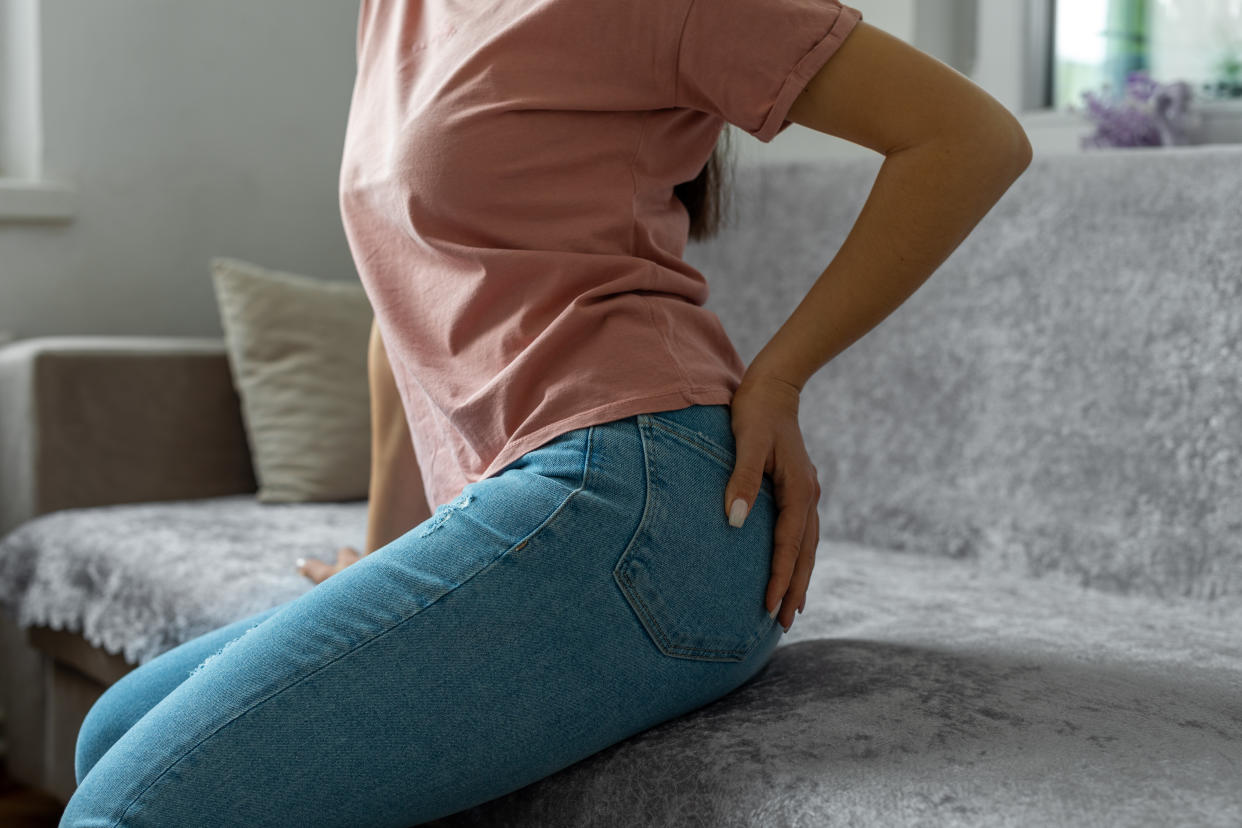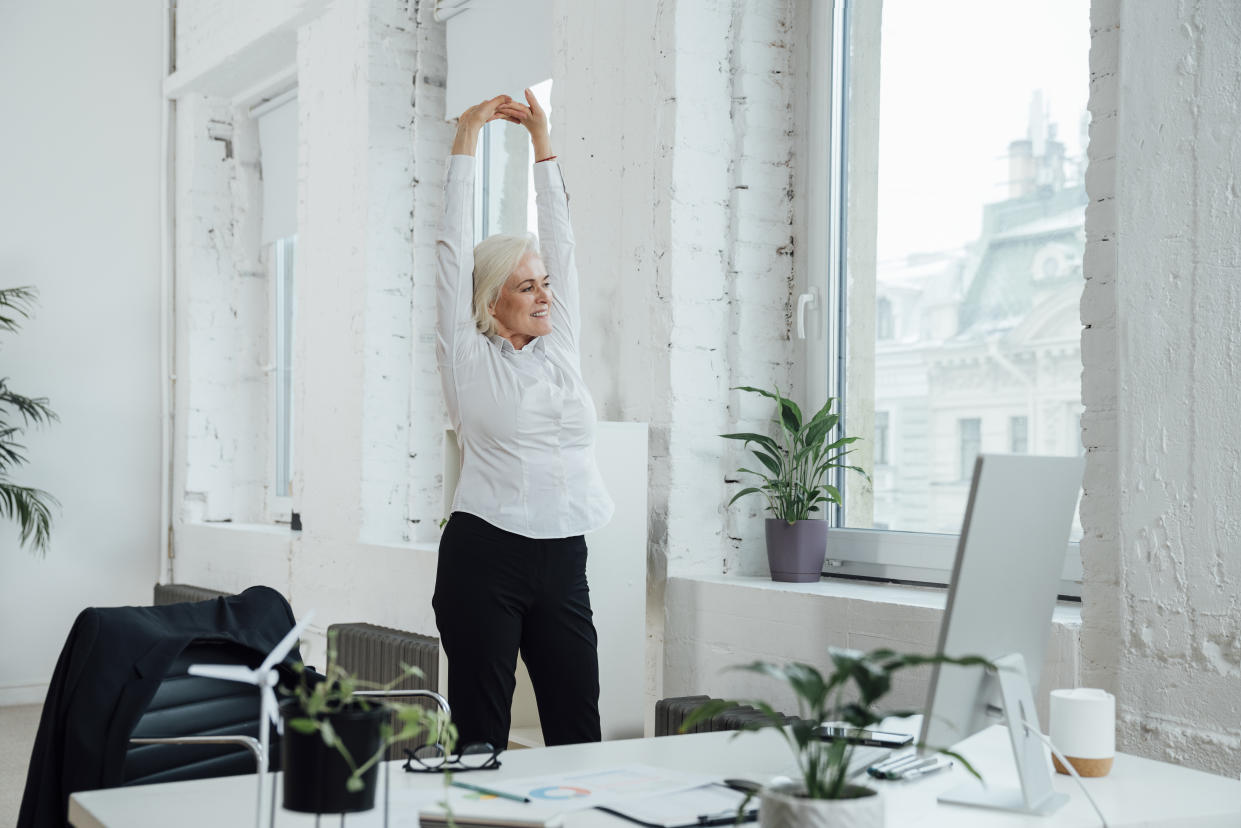What is ‘Dead Butt Syndrome’ and how do you prevent it?

Sitting down for hours at a time is a normal part of our everyday lives, but people are becoming more aware of the dangers of a sedentary lifestyle.
Health experts warn that sitting down for too long without getting up and moving around can be detrimental to our physical health, resulting in stiff muscles and pain. It can also increase the risk of heart disease and diabetes, among other illnesses.
However, it might be a lesser known fact that sitting down for long periods of time can also make the muscles in your buttocks 'forget' their essential functions. According to fitness experts, this is known medically as 'gluteal amnesia', or 'dead butt syndrome'.
Despite the light-hearted name, dead butt syndrome can have serious effects on the body. The muscles in our glutes are important for stabilising the pelvis and maintaining proper body alignment - if they 'forget' their roles, it can lead to pain and loss of strength.
What is dead butt syndrome?

Fitness experts at Mirafit.co.uk, a fitness equipment brand, say the condition occurs when the glute muscles become inactive because of extended periods of sitting, lack of physical activity, or improper muscle engagement.
However, dead butt syndrome is entirely preventable - and as with most issues that are linked to sitting down for too long, the answer lies in getting up and making sure you move.
"Preventative techniques and treatments usually include specific exercises to strengthen and reactivate the glutes and adjustments to daily habits to prevent further muscle inactivity."
What are the symptoms?
Main symptoms of ‘dead butt syndrome’ include:
Numbness in the glutes
Pain that starts in the lower back or bottom and runs down the back of the leg
Pain in the calves
Loss of strength in the glutes and hip flexors
Lower back pain
Knee pain
How do you prevent ‘dead butt syndrome’?
Mirafit’s fitness experts say: "It’s not always easy changing your lifestyle and habits if you are busy at work in front of a computer all day. However, prevention is always better than cure."

Some tips to help combat the condition include:
Set a timer for every hour to remind yourself to get up and move aorund for a few minutes
Sit upright rather than slouching, as this will help open the hip flexors and ease stress on the glutes
Add exercises to your daily routine that will strengthen and condition the glutes and relieve tightness in the hips
Top exercises to prevent ‘dead butt syndrome’
Banded squats
Incorporating a resistance band around your knees when you do squats can help strengthen the glutes, quads and hamstrings, as well as target the gluteus medius muscle for a more extensive workout.
Monster walk
Place a resistance band around your ankles and position your feet slightly wider than hip-width apart. Take small steps forward at a slow pace. You will experience activation in the outer muscles of your glutes during this exercise.
Frog glute bridges
A standard glute bridge involves laying on the floor with your knees bent and raising your hips towards the ceiling. In a frog glute bridge, you position your feet closer to your bum and push your knees outwards, before raising your hips to the ceiling. This increases the engagement of the outer glute muscles.
Side plank with leg raise
In a side plank position, with your elbow placed beneath your shoulder, lift and lower your upper leg. This activates the gluteus medius, as well as stabilising the hips on the opposite side.
Drop lunge
In order to perform a drop lunge, start with feet together and take a step back with one foot, crossing it behind the standing leg. Drop the knee towards the floor, then push off the front food to return to the starting position. This increases hip mobility and strengthens the outer glutes and thighs.
Deadbug
Start with laying on your back with arms extended in front of your shoulders and knees bent above the hips. Extend one arm and the opposite leg away from you, then return to the starting position and switch sides. This workout stregnthens abdominal muscles and promotes proper hip alignment.
Read more about health and wellness:
How little you should be sitting every day, according to a physiotherapist (Yahoo Life UK, 4-min read)
How many steps you need to do to offset sitting, according to scientists (Yahoo Life UK, 3-min read)
5 simple movements to increase mobility as you age (Yahoo Life UK, 3-min read)


